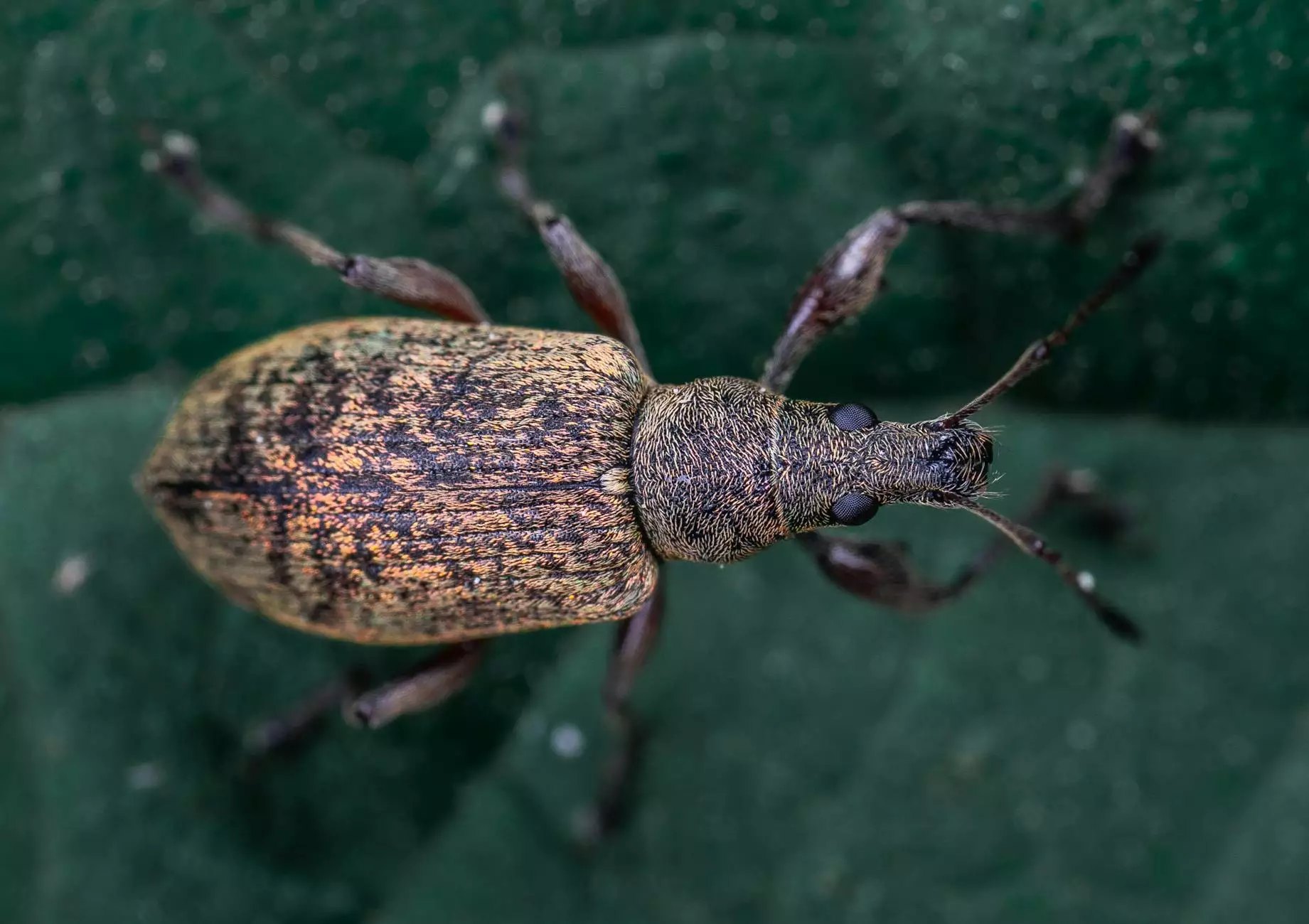Effective Control of Rice Weevil: A Comprehensive Guide

Rice weevils are notorious pests that can cause significant damage to stored grains, particularly rice. Understanding the control of rice weevil is essential for any farmer or grain handler seeking to protect their assets. This article will explore the biology of the rice weevil, the damages they cause, and the most effective control methods, ensuring you are equipped with the knowledge needed to mitigate this pest efficiently.
Understanding the Rice Weevil
The rice weevil, known scientifically as Sitophilus oryzae, is a small beetle that primarily infests stored grains. Here are some key facts:
- Size: Adult rice weevils are about 2.5 to 4 mm in length.
- Color: They have a dark brown or black color with distinctive red-brown spots on their wing covers.
- Lifespan: They can live for several months, during which they can produce more than 200 eggs.
The Lifecycle of Rice Weevils
Understanding the lifecycle of rice weevils is critical to effective control. The lifecycle includes:
- Egg Stage: Female rice weevils lay eggs inside grains. These eggs hatch into larvae.
- Larvae Stage: The larvae feed on the interior of the grain, causing extensive damage.
- Pupa Stage: After several weeks, larvae pupate and eventually emerge as adults.
- Adult Stage: Adults begin mating shortly after emerging, starting the cycle anew.
Signs of Infestation
Identifying an infestation early is crucial for effective control of rice weevil. Look for the following signs:
- Holes in grains: Small holes indicate weevil activity.
- Powdery residue: Fine grain dust is a sign of feeding and can indicate a larger problem.
- Adult beetles: Spotting adult rice weevils crawling around stored grains.
Methods for Controlling Rice Weevils
There are several methods for controlling rice weevil populations effectively. These can be grouped into preventive measures, physical controls, and chemical controls.
1. Preventive Measures
The best strategy against rice weevils stems from prevention. Here are some effective strategies:
- Proper Storage: Use airtight containers to store rice and grains. This reduces the chance of weevil infestation.
- Regular Inspection: Frequently inspect stored grains for any signs of infestation. Early detection is key.
- Cleanliness: Keep storage areas clean and free of debris. This discourages weevil populations from establishing.
- Temperature Control: Store grains in cool, dry environments to inhibit weevil activity.
2. Physical Control Methods
When an infestation occurs, physical controls can help manage the problem:
- Freezing: If you suspect grain is infested, freezing it for at least 48 hours can kill all life stages of the weevil.
- Heat Treatment: Heating grains to above 120°F (49°C) for an hour can also effectively kill weevils.
- Vacuum Sealing: Remove air and seal grains to limit weevil access and reproduction.
3. Chemical Control Methods
If physical methods are not enough to control an infestation, chemical controls may be necessary:
- Pesticides: Use approved pesticides specifically labeled for the control of rice weevils. Always follow label instructions.
- Insect Growth Regulators (IGRs): These disrupt the life cycle of the weevil and can be effective in managing populations.
- Fumigation: For larger warehouses, fumigation might be necessary to eradicate weevil populations completely.
Best Practices for Rice Weevil Control
Implementing a comprehensive control strategy will maximize your success. Consider the following best practices:
- Integrated Pest Management (IPM): Combine multiple control methods for a holistic approach to managing rice weevil populations.
- Training and Education: Educate staff and stakeholders about identifying and responding to rice weevil infestations.
- Consult Experts: When in doubt, consult pest management professionals for advice tailored to your specific situation.
Conclusion
Effective control of rice weevil is essential for protecting your grain storage and preserving the quality of your harvested crops. By implementing preventive measures, utilizing physical and chemical control methods, and following best practices, you can significantly reduce the risk of infestations.
Remember that early detection and intervention are crucial in managing this pest. As you improve your systems and knowledge about rice weevil control, you’ll not only protect your investments but also ensure your farming operation remains profitable.
Contact TSGC Inc. for Expert Assistance
If you are facing challenges with rice weevils or require assistance with farm equipment repair or other farming equipment needs, don’t hesitate to contact TSGC Inc.. Our team of experts is ready to support you in achieving a thriving agricultural operation.









